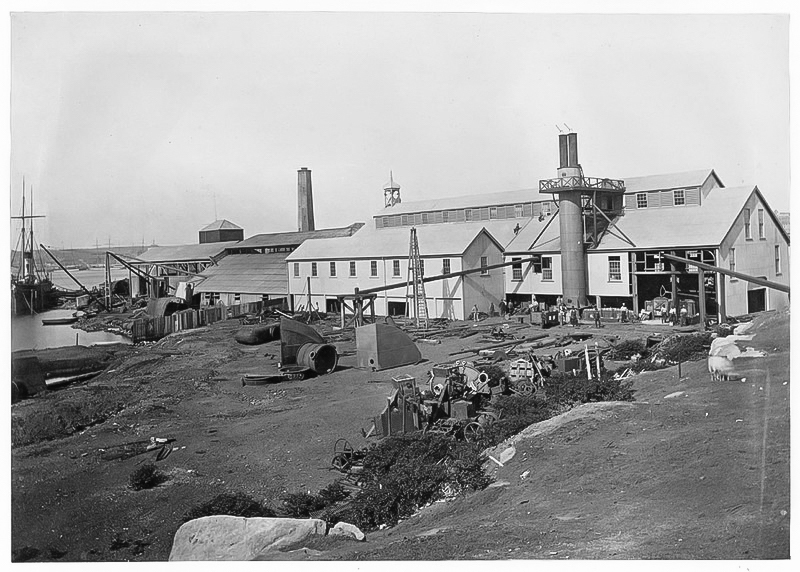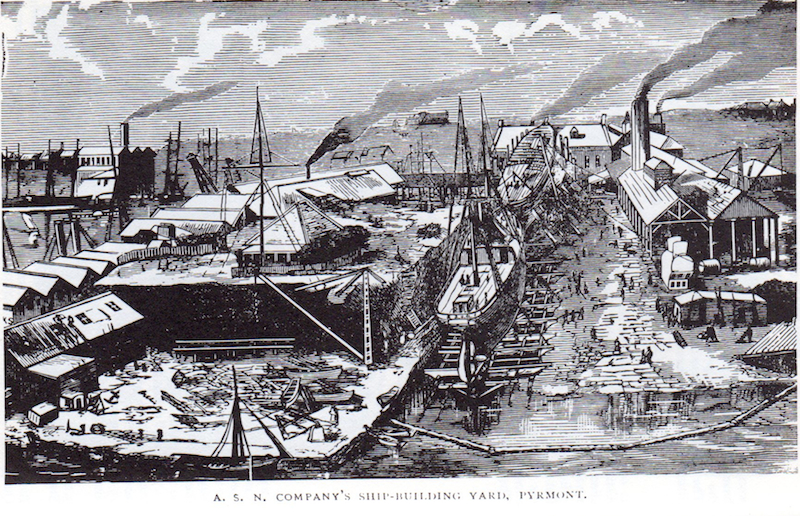Industry > Australasian Steam Navigation Company
Australasian Steam Navigation Company
Among the essential artisans in the First Fleet were carpenters, sail makers and blacksmiths, soon deployed to repair ships. As transport was much easier by sea than by land, ships were essential. Until 1813 private shipbuilding was banned, but from then on there was a great deal of small-scale shipbuilding.
As iron replaced timber hulls the colony’s timber hull sailing vessels were modified by fitting engines, usually with side-mounted paddle wheels. Engines were often recovered from broken-up or abandoned vessels.
Shipping companies formed to conduct trade between Sydney and Newcastle (Hunter River), then extended to coastal commerce between Brisbane and Melbourne. They operated a growing fleet, mainly purchased from Britain, but some were locally built. Darling Island was an ideal place for this ship repair and shipbuilding, surrounded by deep water moorings and shallow mud flats at low tide where large vessels could be dragged on to land.
The Hunter River Steamship Company was established in 1839 to service the settlement around Newcastle. They built the first iron hull ship wholly constructed in Australia – the “Ballaarat” – in 1853. In 1855 the company was re-formed as the Australasian Steam Navigation Company and moved to Darling Island.
To develop the shipyard, ASNC contracted Robert Saunders to level the island and connect it to the mainland. There they began building one of Australia’s foremost slipways and engineering workshops. The slipway grew to become one of the major shipyards in the southern hemisphere.
At its peak ASNC not only repaired and built ships, they operated 26 ships trading along the Australian coast and between America, Asia and Africa.
In 1899 the Government purchased Darling Island and began extensive reconstruction. The Sydney Harbour Trust was created in 1900 (following the outbreak of bubonic plague) to effect tighter control on shipping, and the Trust resumed control of Darling Island.
Thus the slipway, engineering workshops and shipbuilding were replaced by the transport interface and industrial port facilities that flourished until the 1970s.







